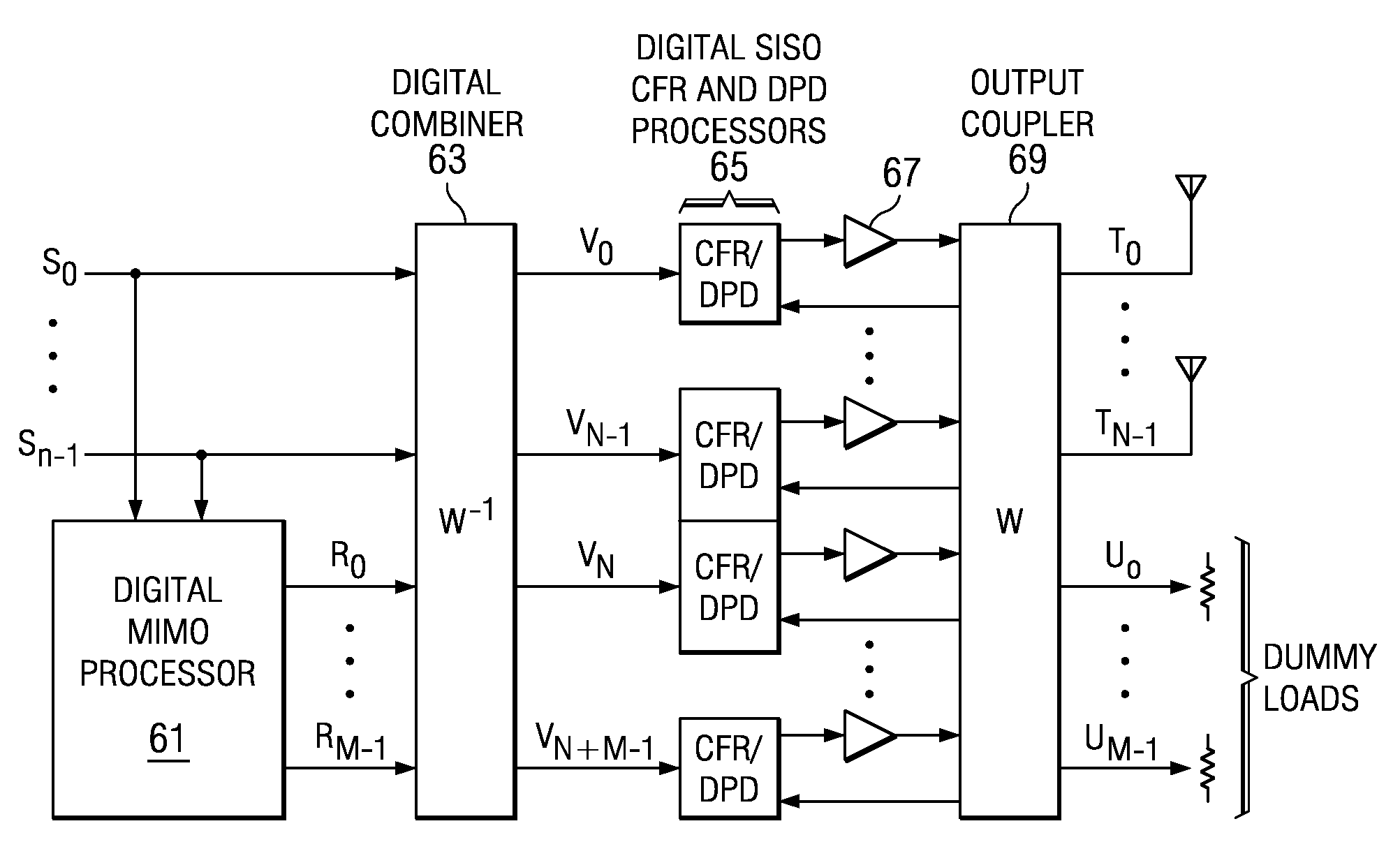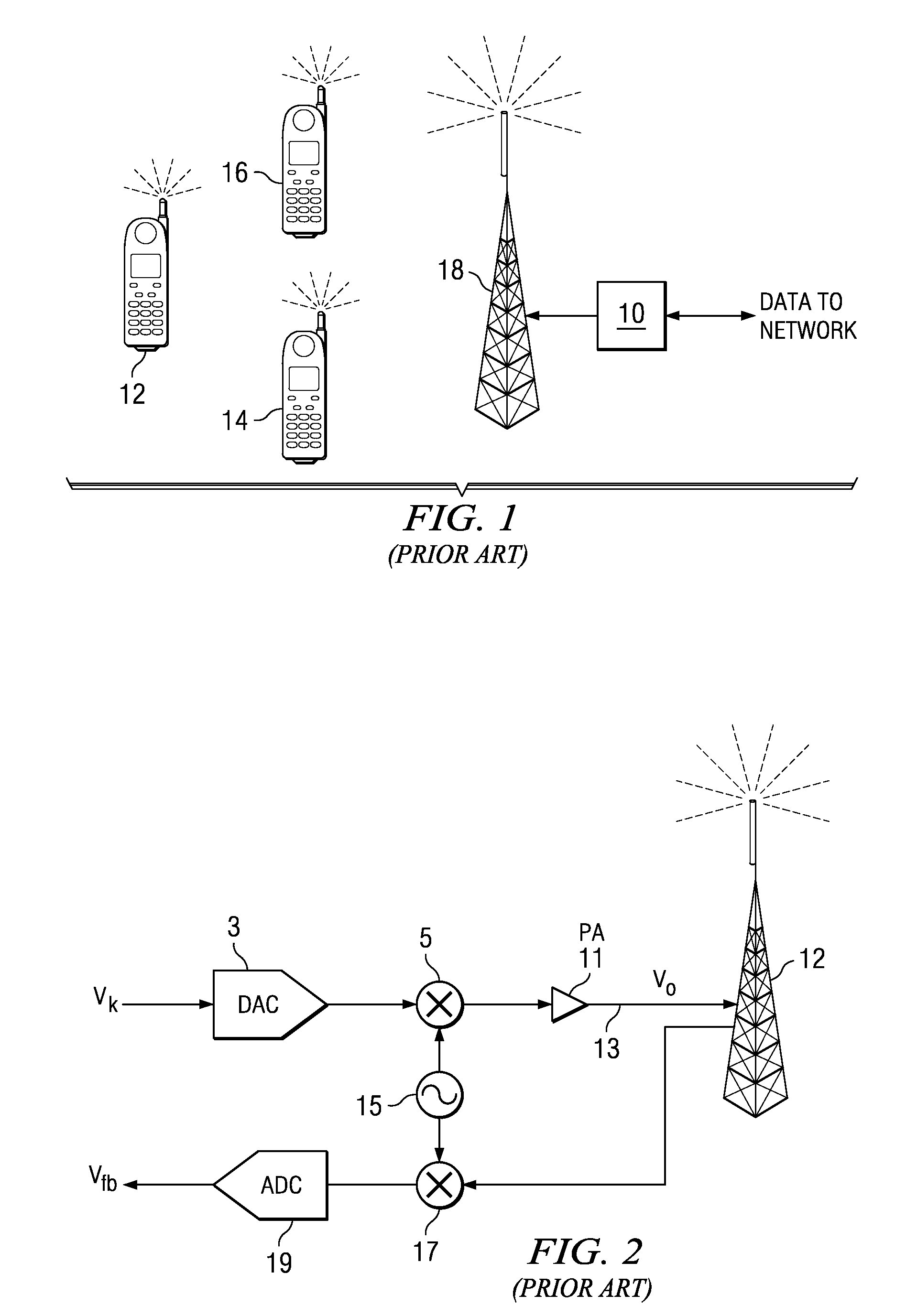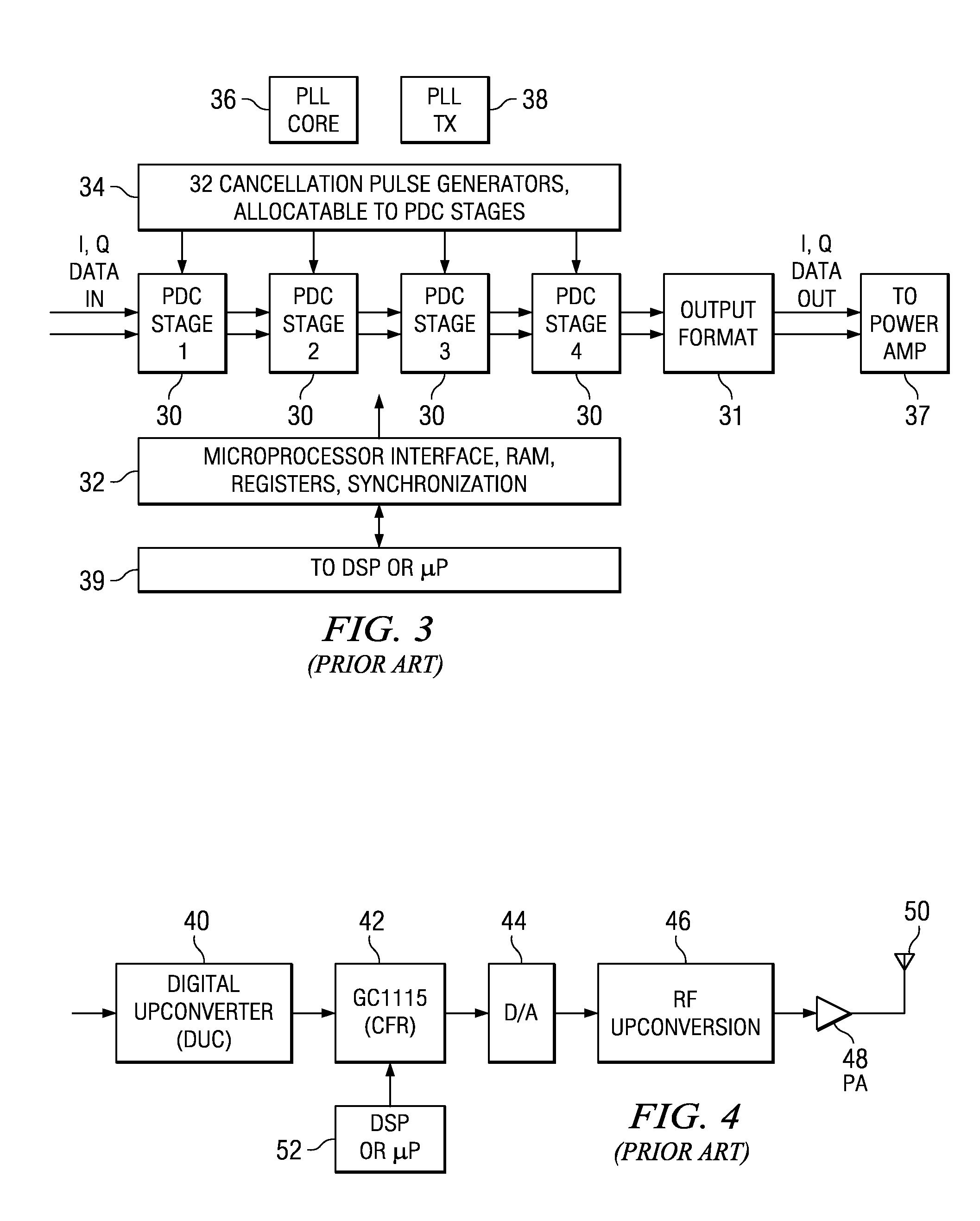System and method for preprocessing a signal for transmission by a power amplifier
a power amplifier and signal technology, applied in the field of system and method for preprocessing a signal for transmission by a power amplifier, can solve the problems of low amplifier efficiency, communication system failure to meet the required performance metrics, and the required transmit power back off to maintain linear performance of driving transistors over the entire range of input signal conditions, so as to reduce the peak to average ratio of input signals, reduce the crest factor, and reduce the effect of crest factor
- Summary
- Abstract
- Description
- Claims
- Application Information
AI Technical Summary
Benefits of technology
Problems solved by technology
Method used
Image
Examples
Embodiment Construction
[0031]The making and using of the presently preferred embodiments are discussed in detail below. It should be appreciated, however, that the present invention provides many applicable inventive concepts that can be embodied in a wide variety of specific contexts. The specific embodiments discussed are merely illustrative of specific ways to make and use the invention, and do not limit the scope of the invention.
[0032]The present invention will be described with respect to preferred embodiments in a specific context, namely a transmitter including a power amplifier for use, for example but not limiting the scope of the invention, in a basestation in a cellular communications system that is an RF transmitter. The invention may also be applied, however, to other power amplifiers where linearizing the input-output transfer characteristic by the preprocessing a signal for transmission, for example by the use of crest factor reduction, is desirable.
[0033]With reference now to FIG. 5, illu...
PUM
 Login to View More
Login to View More Abstract
Description
Claims
Application Information
 Login to View More
Login to View More - R&D
- Intellectual Property
- Life Sciences
- Materials
- Tech Scout
- Unparalleled Data Quality
- Higher Quality Content
- 60% Fewer Hallucinations
Browse by: Latest US Patents, China's latest patents, Technical Efficacy Thesaurus, Application Domain, Technology Topic, Popular Technical Reports.
© 2025 PatSnap. All rights reserved.Legal|Privacy policy|Modern Slavery Act Transparency Statement|Sitemap|About US| Contact US: help@patsnap.com



